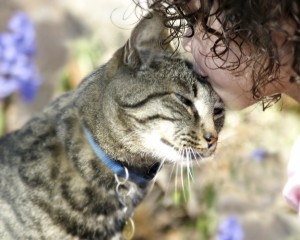Teaching Children About Animals
 Most children are naturally inclined to adore animals – from the Disney-inspired animal movies they covet to their own best-friend pets. Kids are often curious about all types of animals and are the first to want to pet, hold, or investigate any animal they happen to see. And, while this innate affinity is wonderful, it is also a great catalyst for teaching children about animals and how to safely and kindly interact with them.
Most children are naturally inclined to adore animals – from the Disney-inspired animal movies they covet to their own best-friend pets. Kids are often curious about all types of animals and are the first to want to pet, hold, or investigate any animal they happen to see. And, while this innate affinity is wonderful, it is also a great catalyst for teaching children about animals and how to safely and kindly interact with them.
Teaching Children about Animals: Books and Film
One of the best places to start encouraging a love for animals in young children is through books. Some of your favorite titles as a child may even still retain a place on your bookshelf. Classics such as Charlotte’s Web, Old Yeller, and Black Beauty have engaged young and old over several decades. Some more modern books about animals and their preferences, interests, and rich lives include Stellaluna, Cat Champions: Caring for Our Feline Friends, and Shiloh.
Films also play an important educational role regarding animal topics, from the heartwarming Babe, My Dog Skip, and the Fox and the Hound to documentaries on wildlife and their fascinating physiology, habitats, and behaviors.
Volunteering at Shelters
If your child is old enough to volunteer, consider signing up your family to help walk dogs, clean kennels, or cuddle kitties. There are many duties at local shelters, so if your child is not old enough to volunteer directly with pets, inquire about other ways to volunteer.
While at the shelter, there are many learning opportunities, such as the reasons why so many animals end up at shelters, how to approach unknown pets, and the daily care of cats, dogs, and small animals. You can also explain why adoption is a humane and wonderful choice, and why some pets may need extra help to overcome fear and aggression from their experiences on the streets and in cruel homes.
Wildlife Wonders
To broaden your child’s experience with animals to wild nature, there are many fun, safe, and hands-on activities you can use.
- Create a butterfly, bee, and bird friendly yard by planting the plants, shrubs, and trees that attract them.
- Use games like flashcards with images of native wildlife species and their characteristics on the back to help your child learn about wildlife and their unique needs.
- Spend the day at the park with binoculars and a bird guide book and see how many birds you and your child can identify.
- Make snakes and reptiles with an assortment of art paper, pencils or paints, and information about how to identify these cool creatures.
Through these activities, you can also discuss how to avoid surprise encounters with wildlife, such as keeping a distance and how to identify poisonous reptiles.
Modeling Responsible Pet Care At Home
One of the most lasting and meaningful ways you can teach your child a respect and love for animals is through your own daily pet care activities. As soon as your child is old enough, you can begin to include him or her in the daily pet care chores.
Some relevant lessons might include:
- How to gently interact with the family pet (play time)
- Why portion control and limiting treats is good for pets (meal time)
- Why your pet needs daily exercise and socialization with other pet friends
- How those trips to the veterinarian keep pets healthy and contribute to a longer life
- How pets have preferences in activities, food, and interaction just like us
Your example of responsible pet ownership will leave a lasting impression.
There are numerous creative ways to instill a lifelong respect and appreciation for animals only limited by the imagination. Whether you are an educator or parent, teaching children about the fascinating and complex life of animals is likely just as fun and interesting for you.
What are some of your favorite animal education activities?


